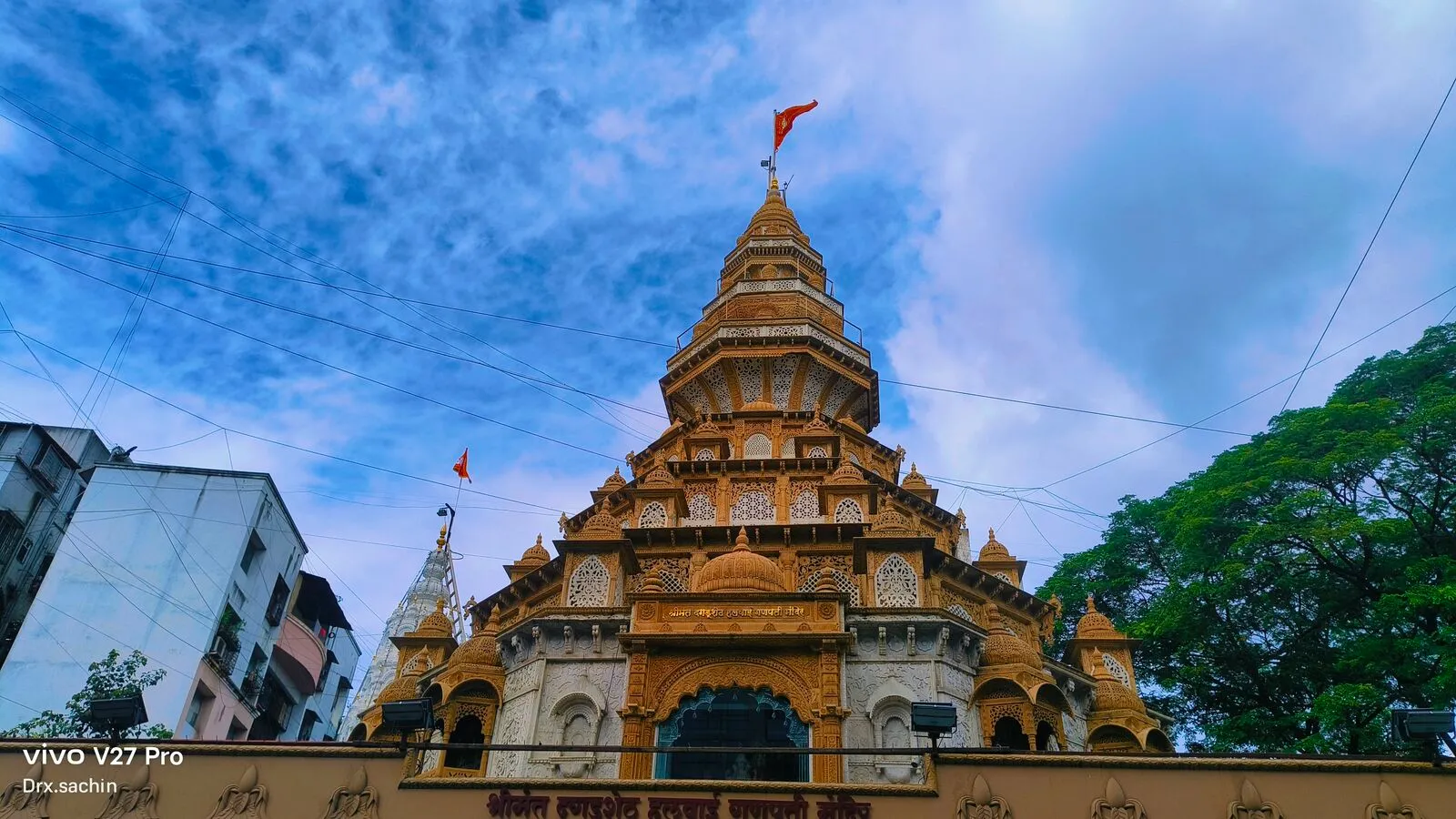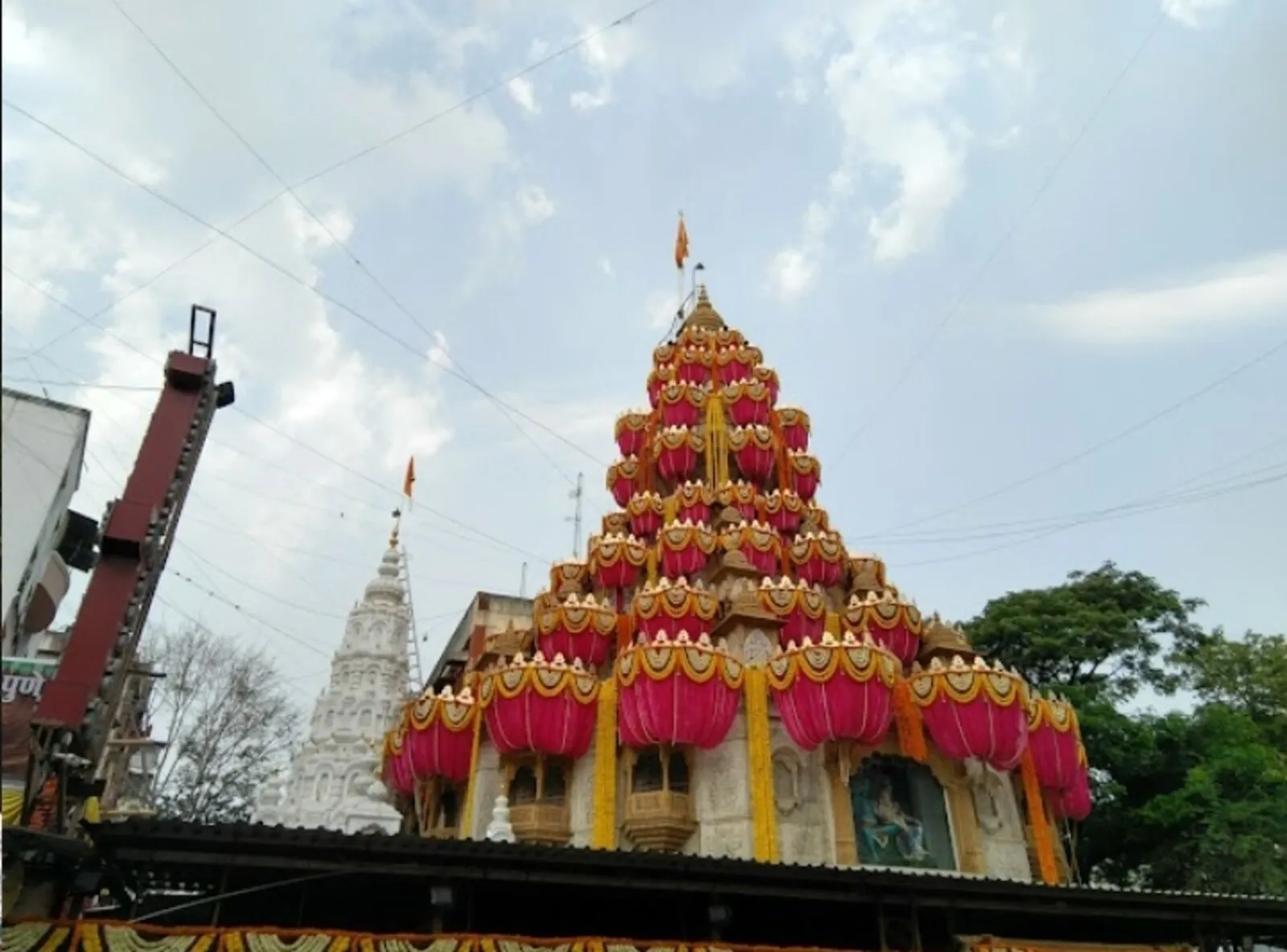Dagdusheth Ganpati Temple Pune: Guide to Visiting
Share this article
Visit Shrimant Dagdusheth Halwai Ganpati Mandir in Pune. Experience the spiritual ambiance and stunning Ganesha idol. Plan your trip!
Discovering Devotion at Shrimant Dagdusheth Halwai Ganpati Mandir, Pune
Nestled in the heart of Pune's bustling Sadashiv Peth area, Shrimant Dagdusheth Halwai Ganpati Mandir stands as a beacon of faith and devotion. This revered Hindu temple is dedicated to Lord Ganesha and is not just a place of worship but a significant cultural landmark for the city and devotees worldwide.
Overview and Location
The temple is prominently located at Ganpati Bhavan, 250, Chhatrapati Shivaji Maharaj Rd, Mehunpura, Sadashiv Peth, making it easily accessible within Pune. Its central location means it's well-connected by public transport, though navigating the surrounding busy streets can be an experience in itself, often lined with flower vendors and shops.
Historical and Cultural Context
The temple's history is deeply rooted in a poignant personal tragedy that blossomed into a community's faith. It was established by Shri Dagdusheth Halwai, a successful sweet maker, and his wife Lakshmibai, who sought solace and spiritual strength after losing their only son to the devastating plague epidemic in the late 19th century. On the advice of their guru, they commissioned the idol of Lord Ganesha. This act of devotion led to the founding of the temple and the tradition of celebrating the Ganesh festival with immense fervor, which eventually played a crucial role in Lokmanya Tilak's initiative to popularize public Ganesh Utsav during the independence movement.
Today, the temple is managed by the Shrimant Dagdusheth Halwai Sarvajanik Ganpati Trust, which is actively involved in extensive social welfare and cultural development initiatives, extending the spirit of community service beyond religious practices.
Reasons to Visit
The primary draw is undoubtedly the magnificent and visually striking idol of Lord Ganesha, adorned with vibrant garments and intricate decorations. The temple architecture itself is notable for its detailed craftsmanship and golden spires. Visiting offers a powerful spiritual experience, with the air often thick with devotional chants and the fragrance of flowers and incense. The efficient management, even during peak times, ensures a relatively smooth darshan experience for the scores of devotees.
Travel Tips, Local Cuisine & Best Times to Go
While in Pune, you can explore the city's famous Maharashtrian cuisine – don't miss local delights like Puran Poli, Misal Pav, or Pune's famous bakery items. The area around the temple also has numerous eateries. Travel within Pune is easy via auto-rickshaws, taxis, or ride-sharing apps. Public buses are also available.
The temple is open daily, typically from 5:00 AM to 10:30 PM (until 11:00 PM on Tuesdays). Aaratis are performed throughout the day, with the Mahamangal Aarti in the evening being particularly popular. The best times to visit to potentially avoid the largest crowds are early mornings or late evenings. However, the temple manages crowds quite well, even during busier hours.
Seasonal Advice
The most energetic, yet most crowded, time to visit is during the annual Ganesh Chaturthi festival, usually in August or September. The temple is the epicenter of Pune's grand celebrations, with elaborate decorations and processions, attracting millions. Visiting during this period offers an unparalleled cultural and spiritual immersion, but be prepared for very long queues. Other special occasions and festivals, like the Mogra Mohotsav (Jasmine festival) mentioned by devotees, also bring unique decorative themes and a heightened sense of festivity. While crowds are common, the spiritual vibrations are always palpable.
This temple is a must-visit for anyone seeking spiritual connection, an appreciation for Indian culture, or simply wishing to witness the deep faith of the people.
LOCAL HIGHLIGHTS
The Main Ganesha Idol
The stunning, brightly decorated central deity of Lord Ganesha, the focal point of devotion.
💡 Spend a moment observing the intricate details of the idol and feel the peaceful energy.
Temple Architecture and Craftsmanship
Admire the detailed carvings, golden spires, and overall design of the temple structure.
💡 Look up and around to appreciate the artistry beyond just the main shrine area.
Devotional Atmosphere
Experience the palpable sense of faith, the sounds of prayers, and the collective devotion of visitors.
💡 Participate in the Aarti if possible to fully immerse yourself in the spiritual environment.
Temple Management and Queue System
Observe the efficient system in place that helps manage large numbers of devotees smoothly.
💡 Follow the designated queue paths and instructions for a quicker and smoother darshan.
Seasonal Decorations
Witness the special thematic decorations, like flowers or traditional costumes, especially during festivals or special occasions.
💡 Check the temple's schedule for any special events or festivals happening during your visit.
Vibrations and Energy
Many visitors report feeling a strong sense of positive energy and peace within the temple premises.
💡 Take a moment for quiet reflection or prayer after your darshan.
The Trust's Social Initiatives
Learn about the extensive social welfare and cultural development work carried out by the managing trust.
💡 Look for information displays or literature about the trust's activities to understand its community role.
TIMINGS





